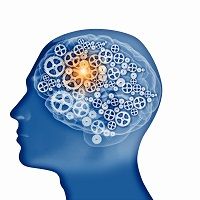Article
Battle of the Sexes: Have Researchers Discovered Why Men and Women Experience Pain Differently?
Author(s):
For the first time, researchers have evidence identifying the key cells behind the pain imbalance between genders.

For the first time, researchers have evidence identifying the key cells behind the pain imbalance between genders.
Despite extensive studies and clinical trials addressing pain, it is still a mysterious phenomenon. It has long been theorized that microglia, the resident macrophages of the brain and spinal cord, are responsible for transmitting pain from the area through the nervous system. However, this appears to only be true in one gender. Co-senior authors Jeffrey Mogil, PhD, and Michael Salter, MD, PhD, along with investigators from McGill University, The Hospital for Sick Children (SickKids), and Duke University, discovered the finding that could alter pharmaceuticals and therapies.
“For the past 15 years scientists have thought that microglia controlled the volume knob on pain, but this conclusion was based on research using almost exclusively male mice,” Mogil, director of the Alan Edwards Centre for Research on Pain associated with McGill University, said in a news release.
According to the research published in Nature Neuroscience, microglia are not required for mechanical pain in female mice. Similar levels of pain were witnessed with adaptive immune cells that are suspected to be T lymphocytes, or T cells. Although the team did not identify how the process specifically happens, the results can influence future pain treatments. The team observed that interfering with microglia altered pain sensitivity in males, however, the same could not be said for females.
“The realization that the biological basis for pain between men and women could be so fundamentally different raises important research and ethical questions if we want to reduce suffering,” Mogil said.
Previous studies determined that more females suffer from chronic pain than males. Now that it has been revealed that pain sensitivity is different between the groups, it suggests that males should not be used in research focusing on female pain.
“Understanding the pathways of pain and sex differences is absolutely essential as we design the next generation of more sophisticated, targeted pain medications,” said Salter, head and senior scientist of Neuroscience & Mental Health at SickKids and professor at the University of Toronto.
The US National Institutes of Health recognized the gender variation and enforced a new policy that requires female animal subjects to be used in clinical trials.
“This finding is a perfect example of why this policy, and very carefully designed research, is essential if the benefits of basic science are to serve everyone,” Mogil concluded.





